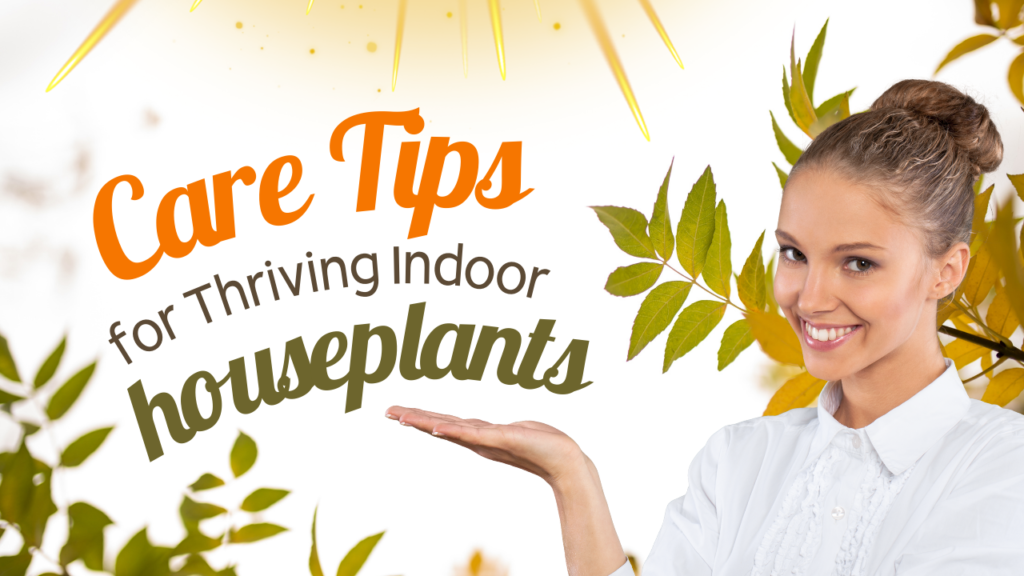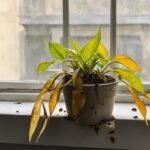Houseplants are a delightful addition to any home, bringing a touch of nature indoors and enhancing the ambiance of your living spaces. However, to ensure that your indoor greenery thrives and flourishes, it’s essential to provide them with proper care. The good news is that you can easily implement nine essential houseplant care tips that won’t cost you a thing. By following these guidelines, you’ll have healthy and proud-worthy houseplants that brighten up your home.

9 New Essential Houseplant Care Tips All Year for Indoor HousePlants
Houseplants bring life and vibrancy to our living spaces, but maintaining their health and vitality can sometimes be a challenge. To help you achieve thriving and lush indoor greenery, we’ve compiled essential tips and tricks. These practical strategies will ensure your houseplants not only survive but flourish in your care. So let’s dive right in!
You can also read 8 Essential Winter Care Tips For Houseplants
Pin the Stems to Encourage Growth:
One effective tip for promoting the health and fullness of your houseplants, especially vining varieties like Tradescantias and String of Hearts, is to pin their stems to the top of the soil. This practice encourages stem development, stronger growth, and the emergence of new stems. Along the stems of vining plants, you’ll find leaf nodes from which roots and new stems can sprout. When these nodes make contact with the soil, they are more likely to develop roots and new growth. This method replicates how plants like Tradescantias grow in the wild, making them robust and bushy.
Regularly Prune for Bushier Growth:
Pruning may seem intimidating to some, but it’s actually a healthy practice for your houseplants. Pruning doesn’t harm the plant; it encourages the growth of new shoots where you’ve made the cuts. Regular pruning will result in a lush and bushy plant with multiple stems and leaves. This technique is now popular to achieve those beautifully bushy houseplants.
Remove Dead Leaves from the Soil:
Dead leaves should not be left to decay on top of the soil. Allowing this can create an ideal environment for pests like fungus gnats, as their larvae feed on decaying matter in the soil. Removing fallen leaves also promotes better air circulation around the plant’s crown, reducing the risk of fungus and rot developing near the soil line.
Rotate Your Houseplants:
Rotate your houseplants regularly to ensure even growth. When placed on a windowsill, plants tend to grow towards the light source, resulting in lopsided growth. By periodically turning your plants, you allow all the leaves to access indirect sunlight, preventing uneven development.
Embrace Bottom Watering:
Bottom watering is an effective method for keeping your houseplants healthy. It encourages roots to grow downward in search of water, preventing them from circling at the pot’s surface. Bottom watering also keeps the top layer of soil dry, which is crucial for deterring fungus gnats, as they prefer moist topsoil.
Encourage Vertical Growth:
Some plants, like Philodendron Brazil, produce larger leaves when encouraged to grow vertically rather than hanging down. Stake your vining plants onto supports like moss poles or garden sticks to mimic their natural growth pattern and watch their leaves grow larger as they climb.
Keep Leaves Clean:
Dusty leaves hinder your plant’s ability to photosynthesize effectively. Regularly clean your plant’s leaves with a damp cloth to remove dust and keep them looking healthy and vibrant. This practice also helps deter pests.
Repot When Necessary:
Houseplants can outgrow their pots, leading to nutrient deficiencies and unhealthy foliage. Check if your plants need repotting at least once a year, typically in the spring when they’re gearing up for new growth. Avoid pots that are excessively large, as this can lead to overwatering. To make the right decision about the plant you can read Choose Right Plant Pot with the Name
Promote Air Circulation:
Good air circulation is vital for preventing fungal infections and strengthening your plants. During the summer, open windows or use fans to improve air circulation. Ensure your plants have enough space to allow air to move freely around them.
By following these nine essential houseplant care tips, you’ll become a confident and successful indoor gardener. Your houseplants will reward you with vibrant growth and lush foliage, adding beauty and tranquility to your living spaces without costing you a fortune. Happy gardening!
You can also read about The 10 Best Grow Lights for Indoor Plants




